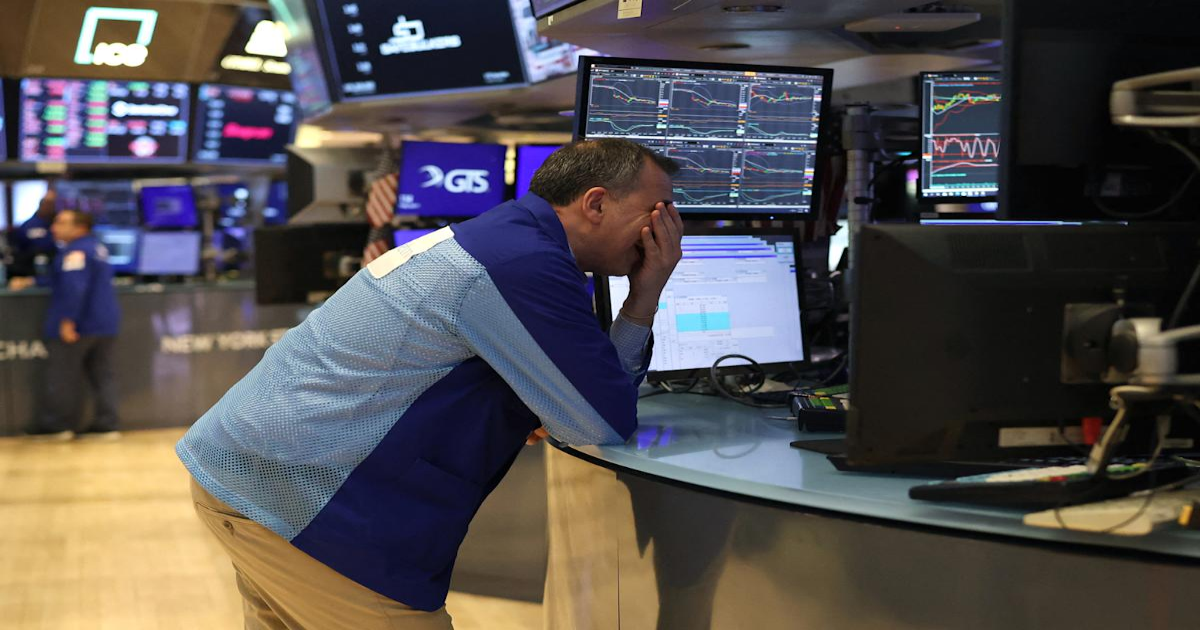The S&P 500 (^GSPC) just had its worst week since March 2020, and Wall Street isn’t confident the selling is over.
Citi head of US equity strategy Stuart Kaiser wrote in a note to clients on Sunday he sees “ample space to the downside” for stocks.
Kaiser said worst case scenario tariff outcomes still haven’t been priced into earnings estimates — or stock valuations. Similarly, should the economy truly be set to slow to the recessionary levels some fear, the stock market hasn’t properly priced in that outcome yet either, Kaiser said.
“We remain very cautious,” Kaiser wrote in a note to clients on Sunday. “Progress on valuation, positioning and risk pricing is not enough as EPS and growth forecasts are well-above the potential tariff impact. Scenarios of [the S&P 500] in the mid-4000s are not unreasonable.”
Equity futures pointed to further selling on Sunday evening.
Futures tied to the S&P 500 (ES=F) plummeted over 4%, while those on the tech-heavy Nasdaq (NQ=F) lost nearly 5%. Dow Jones Industrial Average futures (YM=F) sank 3.7%. The Nasdaq closed in a bear market on Friday while the S&P 500’s losses topped 17% from its record close in February.
CME – Delayed Quote • USD
Economists have been increasingly stern in warning that President Trump’s plan to introduce the largest tariff boost in more than a century could stop the US economy in its tracks.
In a note to clients on Friday, JPMorgan became the first major Wall Street bank to forecast Trump’s tariffs would indeed tip the economy into a recession later in 2025.
Citi’s Kaiser noted that if the economy were entering a recession, the S&P 500 would likely have further to fall.
During recessions since 1948, the median S&P 500 pullback has been 22.1%, per Kaiser’s research. A 22.1% drawdown would bring the S&P 500 down below 4,800, or about where futures pointed to the index opening on Monday morning.
“There has been notable progress made on valuation, positioning and risk pricing, but earnings and economic growth expectations remain well-above levels consistent with announced tariff levels,” Kaiser wrote.
As stocks stumbled to start 2025, a growing discussion on Wall Street concerned about the various “puts” on Trump-induced policy uncertainty, or levels where the Fed, White House, or other policymakers would step in to stop the chaos and help financial markets.
And in the wake of Trump’s “Liberation Day” shock, there doesn’t appear to be any “Trump put” in play.
“The tariffs are coming,” Commerce Secretary Howard Lutnick said on CBS’s Face the Nation on Sunday. He added that Trump “announced it and he wasn’t kidding.”
On Friday, Fed Chair Jerome Powell insinuated that investors shouldn’t anticipate any instant relief from the central bank cutting interest rates, either.
“It’s just too soon to say what the appropriate monetary policy response will be to these new policies,” Powell said. “We can’t say with any confidence today.”
The result is a market in free fall with no clear end in sight.
“The Fed is not ready to step in, and if the president thinks the economy is fine, he has no reason to change course,” Renaissance Macro head of economics Neil Dutta wrote in a note on Sunday. “Before we even speculate on the outlook for trade policies, investors need to know that the combined strike price on the policy put continues to decline.”
Dutta added: “So, you either think tariffs are a means to an end or an end in and of themselves. The sooner everyone realizes that is probably the latter, the sooner we can start talking about getting back into the market.”
Traders work on the floor of the New York Stock Exchange (NYSE) in New York City, on April 4, 2025. (Photo by TIMOTHY A. CLARY/AFP via Getty Images) · TIMOTHY A. CLARY via Getty Images
Josh Schafer is a reporter for Yahoo Finance. Follow him on X @_joshschafer.
Click here for the latest stock market news and in-depth analysis, including events that move stocks
Read the latest financial and business news from Yahoo Finance
